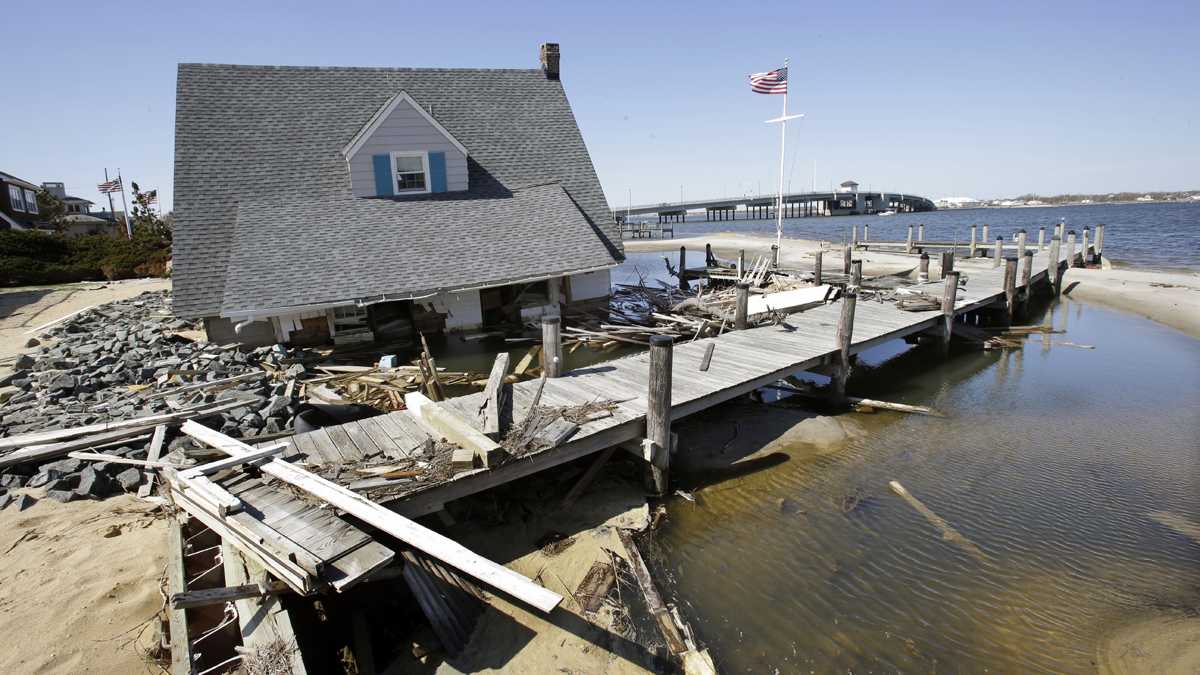Climate change already adding to flood risk for New Jersey coast
Listen
A home rests next to a pier in Barnegat Bay near the Mantoloking Bridge in Mantoloking, New Jersey, after it was swept away by Superstorm Sandy in 2012. (Mel Evans/AP Photo)
As the East Coast braces for a tropical storm later this week, research from Penn State and Rutgers universities suggests damaging storm surges have become more common as a result of climate change.
Scientists can’t pin any single storm on climate change, but they can evaluate long-term trends. In the study, published this week in the journal PNAS, researchers went back more than a millennium, to the year 850, tracking sea level rise and tropical cyclone behavior over time.
Although the sea level for the New York City and New Jersey area has consistently risen over time, the sharpest increase has occurred in the last 30 years. And tropical storms now are often bigger or more intense than in the past.
“Those two things combined can really increase the risk for the region,” said Penn State climate science graduate student Andra Reed, who was the lead author of the work.
Indeed, one reason for the widespread devastation of Superstorm Sandy nearly three years ago was its slow movement, allowing it to exacerbate already high sea levels.
“It’s a storm that didn’t have a high intensity in terms of its atmospheric pressure or its wind speed, but it was a colossally big storm that was moving at a slow sort of speed towards the Jersey Shore,” said Ben Horton, a Rutgers sea level researcher and co-author of the paper. “Therefore it could coincide with the tidal cycle, and that was one of the reasons why there was such severe flooding in our region.”
In the past 30 years, compared with the pre-Industrial Revolution era, flood heights are on average 4 feet higher, the team found.
Prior to the Industrial Revolution, a storm like Sandy would only happen once every 3,000 years, Reed said.
“Generations at a time would go without seeing something like that,” she said. “Whereas, in the more modern era, we’re seeing that a flood height of that magnitude could occur up to once every 130 years, or about once a century.”
Lesser, but still highly destructive storms that used to hit the area once every 500 years are now predicted to strike every 25 years, according to the study.
Cities need to make some tough decisions about how to protect shores, Horton said, but the root cause of the problem shouldn’t be forgotten.
“Without reducing our greenhouse gas emissions,” he said, “all the adaptation that we make upon our coastline is going to be meaningless.”
WHYY is your source for fact-based, in-depth journalism and information. As a nonprofit organization, we rely on financial support from readers like you. Please give today.

